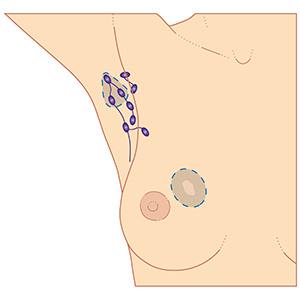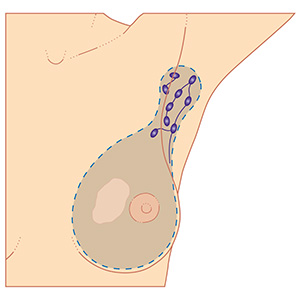Breast Cancer is a disease in which malignant or cancer cells form in the tissues of the breast. One in 8 women in the United States will be diagnosed with cancer in her lifetime. When caught in its earliest, localized stages, the 5-year relative survival rate is 99%. Because of awareness, research, and advances in early detection and treatment, survival rates have increased significantly over the years. Finding the right team — a team consisting of professionals who welcome questions, explain treatment options, and make you feel comfortable is important. Dr. Bardoner and his Physician Assistant, Melissa Long, will work together to determine the best course of treatment for your individual cancer.
Breast cancer services

- Mastectomy
- Lumpectomy
- Sentinel node mapping and biopsy
- Axillary lymph node dissection
- Benign breast masses
- Genetic screening and testing
- High risk breast cancer tcreening
- Prophylactic mastectomy
What is a lumpectomy?

A lumpectomy is a surgical procedure during which a small amount of breast tissue is removed to get the tumor and a margin of surrounding healthy tissue around it out.
What is a mastectomy?

A Total Simple Mastectomy removes the entire breast, nipple, and areola. This type of mastectomy removes the breast skin as well.
A Skin-Sparing Mastectomy removes breast tissue, nipple, and areola but not the breast skin. Women who are considering breast reconstruction will often opt for this procedure.
A Skin, Nipple, and Areola Sparing Mastectomy is a type of mastectomy that preserves the nipple, areola and skin.
What is a sentinel node biopsy?
The sentinel node, is the first lymph node to which cancer is likely to spread from the primary tumor. It is the lymph node that is first reached by metastasizing cancer cells. A sentinel lymph node biopsy is a procedure to evaluate the lymph node(s) closest to the tumor. If the breast cancer were to spread away from the breast and into the lymphatic system, this node would be the first one to show evidence of the breast cancer. A tracer material is used to locate and remove these nodes during surgery.